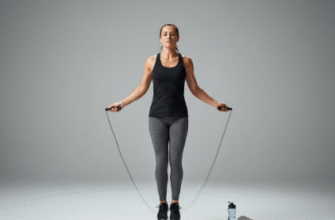Ever feel winded carrying the groceries up a flight of stairs? Or maybe your back aches after an afternoon gardening? We often think of “strength” in terms of lifting heavy weights in the gym, focusing on isolating specific muscles like biceps or quads. While that has its place, there’s another approach that directly translates to making everyday life feel easier and less strenuous: functional fitness.
Instead of just building bigger muscles, functional fitness trains your body to handle real-world activities safely and efficiently. It focuses on movements that mimic the things you do every single day – bending, twisting, lifting, pushing, pulling, squatting, and carrying. Think about it: life doesn’t happen in isolated muscle movements. You don’t just use your biceps to lift a heavy box; you engage your core, back, legs, and shoulders all at once. Functional training prepares your body for precisely these kinds of integrated movements.
What Makes Functional Fitness Different?
Traditional weight training often involves sitting or lying down and isolating one muscle group at a time. Think bicep curls, leg extensions, or chest presses on a machine. Functional fitness, on the other hand, typically involves standing movements that require balance, coordination, and core engagement. Exercises often use multiple joints and muscle groups simultaneously.
Imagine the difference between a seated machine leg press and a simple bodyweight squat. The leg press isolates your quads and glutes but doesn’t challenge your balance or core stability much. A squat, however, requires you to stabilize your entire body, engage your core, maintain balance, and coordinate the movement of your hips, knees, and ankles – much like getting up from a chair or picking something off the floor.
This approach utilizes tools like kettlebells, dumbbells, resistance bands, medicine balls, suspension trainers (like TRX), and even just your own body weight. The emphasis isn’t solely on how much weight you can move, but on the quality of the movement and how well it prepares you for life outside the gym.
Everyday Strength: The Real Payoff
So, why should you try functional fitness? The biggest benefit is its direct carryover to daily activities. Training movements rather than just muscles makes common tasks feel significantly less demanding.
Making Daily Chores Easier
Consider these common scenarios:
- Carrying Groceries: Exercises like farmer’s walks (walking while holding weights in each hand) build grip strength, core stability, and shoulder endurance needed for lugging heavy bags.
- Lifting Children or Pets: Squats and deadlift variations (using appropriate weight or resistance bands) teach you the proper mechanics for lifting from the ground using your legs and core, not straining your back.
- Gardening or Housework: Movements involving bending, twisting, and reaching, like wood chops with a resistance band or medicine ball lunges with a twist, improve core strength and rotational power, reducing the risk of strain during these activities.
- Putting Items on High Shelves: Overhead presses and push presses build shoulder strength and stability needed for reaching and lifting overhead.
- Getting Up from the Floor: Exercises like Turkish get-ups or even simple floor-to-stand drills improve coordination, mobility, and overall body strength, making this fundamental movement easier, especially as we age.
Improved Balance and Coordination
Many functional exercises are performed standing, often on one leg or involving dynamic movements. This constantly challenges your balance and proprioception (your body’s awareness of its position in space). Better balance means a lower risk of falls, which is crucial for people of all ages. Improved coordination makes movements smoother and more efficient, whether you’re playing a sport, dancing, or just navigating a crowded street.
Core Strength is Key
Functional fitness places a huge emphasis on the core – not just the “six-pack” abs, but the entire network of muscles around your trunk, including your back and hips. Almost every functional movement engages the core to stabilize the spine and transfer power between the upper and lower body. A strong, stable core is fundamental for preventing back pain and improving performance in virtually any physical activity.
Verified Principle: Functional fitness prioritizes multi-joint, multi-planar movements that mimic real-life activities. This approach enhances neuromuscular coordination, meaning your brain gets better at telling your muscles how to work together efficiently. This coordination is crucial for both performance and injury prevention in everyday tasks.
Injury Prevention Through Smarter Movement
By strengthening the muscles used in everyday movements and improving movement patterns, functional fitness can significantly reduce the risk of injury. When your body knows how to lift, bend, and twist correctly, using the right muscles and stable joints, you’re less likely to strain your back lifting a box or pull a muscle reaching for something.
It addresses muscle imbalances, too. Traditional training can sometimes overdevelop certain muscles while neglecting others. Functional training encourages a more balanced approach, ensuring that stabilizer muscles are just as conditioned as the larger prime movers. This balance creates more resilient joints and reduces compensatory movements that often lead to chronic pain or sudden injury.
Accessibility and Scalability
One of the great things about functional fitness is its adaptability. You don’t necessarily need a fancy gym membership or expensive equipment. Many highly effective exercises rely solely on bodyweight.
Starting Functional Fitness
Beginners can start with foundational movements:
- Bodyweight Squats: Master the form of sitting back into a chair.
- Lunges: Step forward, backward, or sideways, focusing on balance.
- Push-ups: Start against a wall, on your knees, or progress to full push-ups.
- Planks: Build core endurance by holding a stable position.
- Bird-Dog: Enhance core stability and coordination by extending opposite arm and leg.
As you get stronger, you can increase the challenge by adding repetitions, sets, or introducing external resistance like dumbbells, kettlebells, or resistance bands. The focus remains on maintaining good form throughout the movement. You can perform these workouts at home, outdoors, or in a gym setting. Many group fitness classes now incorporate functional training principles, offering guidance and motivation.
Beyond Just Strength: Other Benefits
While everyday strength is the primary focus, functional fitness offers more:
- Improved Mobility and Flexibility: Many exercises move joints through their full range of motion.
- Enhanced Cardiovascular Health: Performing exercises in circuits with minimal rest can provide a great cardio workout.
- Increased Calorie Burn: Engaging multiple large muscle groups simultaneously burns more calories than isolated exercises.
- More Engaging Workouts: The variety and dynamic nature of functional exercises can make workouts more enjoyable and less monotonous.
Is Functional Fitness Right for You?
If your goal is to feel stronger, more capable, and less prone to aches and pains in your daily life, then functional fitness is an excellent choice. It bridges the gap between gym workouts and real-world demands. It’s not about building beach muscles (though that can be a side effect); it’s about building a body that serves you well, day in and day out. Whether you’re a busy parent, an office worker, an older adult looking to maintain independence, or simply someone who wants to move better and feel stronger, incorporating functional training principles can make a tangible difference. Give it a try – your body, tackling its everyday tasks with newfound ease, will thank you.








